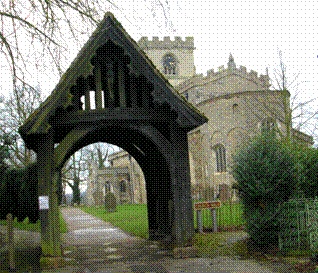St.Catherine's Cross

Remains of St. Catherine's Cross at Lincoln Castle
What remains of St. Catherine's Cross now stands in the museum grounds of Lincoln Castle, England, and is from one of twelve Eleanor Crosses.
The area has been occupied for thousands of years. Mesolithic-period flints have been found, demonstrating that people were there since at least the 6th millennium BC.
As 'recently' as the 11th century AD, William the Conqueror built Lincoln Castle; not always a cheerful place where for 900 years, criminals were tried and many executed on the ramparts. The castle was also a grim holding prison for convicts destined for Australia, Gibraltar and Bermuda. Today, it is a tourist attraction and houses one of the original copies of the Magna Carta.
The Magna Carta is the 13th century legal charter that limited the power of the king and granted freedom to citizens. It influenced the development of the common law and is antecedent to the United States Constitution and Bill of Rights. Several copies of the Magna Carta exist and one was auctioned at Sotheby's New York in 2007 for a cool $21.3 million. But the real value is in the contents. One of its most notable Articles is the writ of habeas corpus.
Also in Lincoln is an area called St. Catherine's. This is on the site of St. Catherine's Priory, which included a church and a hospital. It was here that Queen Eleanor's body was embalmed as her funeral cortege was being prepared for the long journey south to Westminster Abbey, London.
Before funeral ceremonies took place, it was common practice to lay the shrouded body at the church entrance gate whilst the funeral party awaited the priest. A simple thatch, wooden or stone canopy, known as a lych (from the Saxon 'corpse'), was provided for this. Here, the priest would perform a preliminary service before entering the church proper. Pall bearers would wait at the lychgate until the main service ended and then take the body for burial.
Some of the lychgates were quite large with rooms or small chapels built above. Others were built as memorials to the deceased and as an extension to this concept, Churchyard Crosses were erected. One such was the St. Catherine's Cross erected in memory of Queen Eleanor.

Lychgate at All Saints' Church, Wing, Buckinghamshire, England